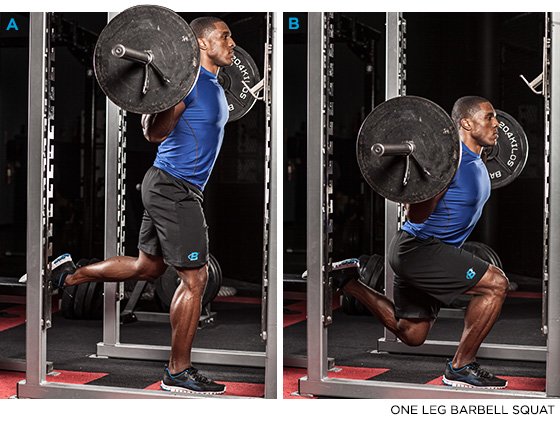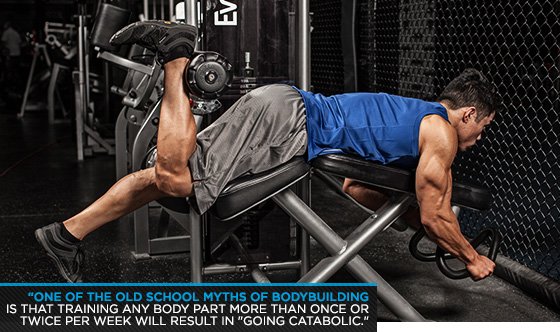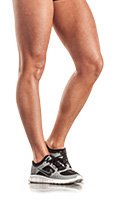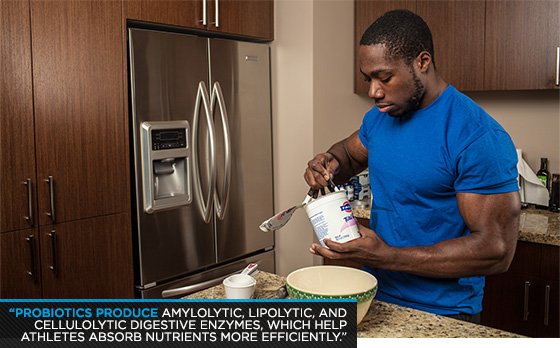I am going to ask you a question, and without thinking I want you to blurt out the first answer that comes to mind. Ready? Here's the question:
How much cardio do you need for fat loss?
Many of you probably said a lot! A good portion of you were probably a bit more specific, and said something like: 25-30 minutes, 3-5 cardio sessions per week.
Which answer is correct? Neither of them. You don't "need" cardio for fat loss. Let's get into why.
What is Cardio?
Cardio, as viewed by those of us trying to lose weight, is a light to moderate form of exercise that can be performed for an extended period of time without stopping. The goal of cardio is simple: keep moving so you burn as many calories as possible.
Cardio is also generally performed to improve our cardiovascular health. But since this article is addressing a specific question (how much cardio is NEEDED for fat loss), I will stick to that topic. Whether cardio does, or doesn't improve health is beside the point.
There are 2 major forms of cardiovascular exercise:
- HIIT - High Intensity Interval Training. Involves alternating before short periods of very intense movement, such as 15 seconds of sprinting, and longer periods of low intense cardio such as walking.
- LIT - Low Intensity Training (also called Steady State). This is the typical form of cardio performed by gym rats and cardio bunnies. It involves long, boring sessions on a treadmill or Stairmaster.
HIIT is generally considered a more efficient form of cardio, meaning you can burn more calories in a shorter period of time. HIIT is also more engaging, or fun. Despite these benefits, HIIT cardio is also more difficult. It is more explosive, harder on the joints, and certainly not as easy for heavier or older folks.
With this in mind, we will look at low intensity cardio, and how many calories it can burn per session.
 Calories Burned During LIT - Low Intensity Cardio
Calories Burned During LIT - Low Intensity Cardio
Based on a 220 pound individual performing 30 minutes of cardio.
- Hiking - 325 calories
- Stairmaster - 325 calories
- Swimming - 325 calories
- Walking - 151 calories
Let's say you are determined to perform 4 treadmill sessions per week at 30 minutes per session. This equates to about 600 calories burned per week.
Over the course of a year's time, you till have burned off a total of 30,000 calories (allowing for a few missed workouts). How much fat did this burn off? What was the reward for your hard work?
You lost 8.5 pounds of fat. You lost 8.5 pounds of fat as a result of your 100 hours of treadmill time.
What is the point in walking you through these numbers? To show you that cardio, while good for overall health, is generally not an efficient method of burning fat.
If your goal is to lose 40-75 pounds of fat, you can live on a treadmill and still barely put a dent into those numbers. This brings us to the point of this article: you don't "need" cardio to lose fat, you need to nail down your diet.
Diet and Fat Loss
A good eating plan will melt fat off your body. The only requirement - precision, monitoring your calorie intake, and making adjustments when needed.
Remember the question we asked at the beginning of this article? Most people, when they find the motivation to lose weight, think of cardio first. They hit the gym and immediately start grinding out hours upon hours on the treadmill.
Diet is what they should be thinking about.
Cardio without a wise eating plan is a disaster waiting to happen. If your eating goes unmonitored, cardio is likely to increase your appetite and maybe even cause you to not lose any fat at all.
Remember the old saying....working up an appetite? It's very appropriate here. If you have no idea how many calories you are taking in each day, it's very easy to slip in an extra 200-400.
By setting up a quality eating plan you can easily reach your fat loss goals in a year. More than this, you are assured of reaching your goals. Guaranteed! (If you follow the plan, that is) You can't get this guarantee from cardio, unless you live in the gym for 8 hours per day.
An eating plan can be structured to fit your needs. It can be set up to help you lose anywhere from 5 to 25 pounds of fat per month. Even if you're hammering out the miles on a treadmill, your eating plan is still doing anywhere from 80 to 95% of the fat loss work.
This is why you don't "need" to do any cardio each week to lose fat. While cardio is great for overall health, it will never be as powerful as a quality eating plan.
Setting Up An Eating Plan
So now that we've talked about setting up a "quality" eating plan, let's look at how to do so.
The first thing you need to do is estimate a daily amount of calories that allows you to maintain your weight. I recommend checking out the article: How To Determine Your Daily Calorie And Macronutrient Intake Levels. Equipped with this number, it's time to proceed and dial in your daily calories so they are in line with your weight loss goals.
It should be known that most body composition experts recommend you lose weight no faster than 1.5 to 2 pounds per week. This rate helps you to maximize muscle retention while losing fat. Simply stated, it helps you to lose mostly fat while holding on to as much muscle mass as possible.

First 2 Weeks
Subtract 300 calories from your daily maintenance level and eat this amount for 2 straight weeks. This will help you establish a baseline, or what exactly the scale is doing in response to this amount of food.
You will want to weight yourself first thing in the morning (after urination) each day during this 2 week period. Write down these numbers so you have concrete data to work with.
Weight loss during the first week is typically rapid. Ignore the weight lost during these 7 days, as most of it is water. When you begin a diet you are typically eating fewer daily carbs and less sodium. Because of this your body will flush some excess water it has been carrying around in cells and in your blood stream.
The second week is the important week. If you lost more than 2 pounds per week during this period, pull back your calories by 200-300 per day and monitor your weight loss over the course of another 2 week period. If you did not lose any weight at all, drop your calories by 200-300 per day and monitor over the course of the coming 2 weeks. If you gained weight, drop your calorie intake by 500 per day and monitor your weight during the coming 2 weeks.
Aggressive Weight Loss
If you are after more aggressive weight loss, due to severe obesity or other health related issues, then you may want to pull back your calories so that you are losing 3 to 5 pounds per week.
Some fitness professionals will warn you against rapid weight loss plans, while others see then as the best route health-wise to go. It is beyond the bounds of this article to explore the pros and cons of slightly more aggressive weight loss plans.
Do your own research and talk to your doctor. Understand the pros and cons that come with both a conservative and aggressive weight loss protocol.
Avoid starvation diets. While losing weight a little more rapidly than normal is generally ok, you still want to monitor the scale and your calorie intake so that you are not guessing. Dial in your calories until you reach a consistent and comfortable rate of weight loss.
How to use Cardio and Diet To Lose Fat
 How that we have your eating plan set up, let's consider cardio.
How that we have your eating plan set up, let's consider cardio.
An eating plan set up to maximize body composition - retaining muscle mass while losing fat - will result in a loss of about 75 to 100 pounds of fat per year. A more aggressive eating plan could potentially result in a weight loss of 150 pounds or more per year.
While the weight loss resulting from cardio is minimal compared to these numbers, and while cardio is not necessarily needed to lose fat, it can play a beneficial role in the fat loss process when you reach plateaus and sticking points. Here is how I recommend using cardio during the fat loss process.
First, Use Cardio For Health
When you first begin the fat loss process, don't obsess over cardio. Think of it as something that can improve your overall health, but not as a requirement to lose fat.
Don't rush into the gym and live on the Stairmaster or treadmill. This is a great way to zap your motivation.
Instead, spend the first 4 to 6 weeks of your weight loss program dialing in your diet. You can slowly add in cardio during this time - for health. Don't overdo it. Allow your body to acclimate to the demands of this additional form of exercise.
Here is a 6 week treadmill plan that eases you into a solid amount of (health beneficial) cardio.
- Week 1 - 2 sessions per week, 10-15 minutes per session.
- Week 2 - 2-3 sessions per week, 15-20 minutes per session.
- Week 3 - 3 sessions per week, 15-20 minutes per session.
- Week 4 - 3 sessions per week, 20-25 minutes per session.
- Week 5 - 3-4 sessions per week, 20-25 minutes per session.
- Week 6 - 3-4 sessions per week, 20-30 minutes per session.
This should be all the cardio you ever need. With that said, weight loss plateaus can happen, especially during extended cutting periods.
When a stall does occur, instead of lowering your calories any further, try making a small adjustment to your weekly cardio. Add 10 minutes of treadmill time per week, and see if this little bump helps. If not add another small bump. If this does not help, then you may need to drop your calories by another 200 per day.
Do not panic and rush to drop your calories or increase cardio. Sometimes we just have a bad week. If you hit a 2 week skid without weight loss, then it may be time to make these minor changes.
Final Thoughts on Cardio
Cardio. Great for health, not needed for fat loss.
I know many of you will think this is hyperbole, but I know quite a few bodybuilders and athletes who don't use cardio while trying to lose fat/weight. You can include me in this list.
I've been involved with fitness and lifting for nearly 30 years. During this time I've been a runner, powerlifterand have lifted to pure muscle size.
I prefer to do the minimum amount of cardio necessary when shedding the fat. The main reason is that cardio tends to spike my hunger. I prefer to minimize the drive to eat in any way possible.
Bottom line...if you want to lose weight, don't rush out and live on the treadmill. Relax, take some time to set up an intelligent eating plan, and slowly ease into cardio.
The fat loss will come.



















